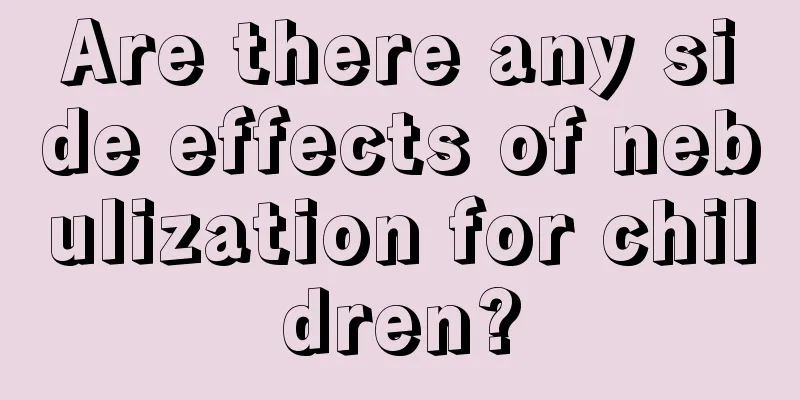What to do if your child has diarrhea and dehydration

|
We all know that babies are most prone to diarrhea. This phenomenon is because the baby's stomach is not yet fully developed, so it is very likely that the baby will have indigestion. At this time, mothers need to give the baby some digestive aids, otherwise it is likely to cause diarrhea in the baby. If the baby continues to have diarrhea, it will cause dehydration, and the baby will look particularly listless. So what should we do if children have diarrhea and dehydration? Why are babies prone to diarrhea in summer? The gastrointestinal tract of babies is immature, and their stomach acid is lower than that of adults. In addition, they drink more beverages in the summer, which dilute the gastric juice and reduce its bactericidal ability. The baby's gastrointestinal tract also has fewer digestive enzymes than adults, which is not conducive to the digestion of food. The hot weather reduces the secretion of digestive juices and enzymes, making it more likely to cause indigestion and diarrhea. Infants and young children grow and develop rapidly, and need to consume more nutrients than adults, and nutrients must be digested and absorbed through the digestive tract, so the burden is heavier. It is hot in the summer, and bacteria can easily grow and multiply. In addition, they eat more cold dishes, which increases the chance of gastrointestinal infection. Diarrhea in children often manifests as sudden loss of appetite, diarrhea, and vomiting. In most cases, vomiting is followed by diarrhea, but there are also cases where vomiting and diarrhea occur at the same time. The children have loose stools, several to dozens of times a day, some of which contain pus and blood, and are often accompanied by vomiting, fever, abdominal distension, and irritability. If you do not replenish water in time when vomiting and diarrhea occur at the same time, it is easy to cause dehydration. Some children may also experience symptoms such as fever, runny nose, and cough. If the baby has diarrhea but does not have fever or vomiting, and is in good spirits, but only has loose stools, he can be observed for half a day. If the symptoms are mild, you can recover by drinking more water and getting more rest. However, infants have relatively weak immunity and symptoms are more likely to worsen. When the frequency of stool increases and becomes more watery, it is necessary to go to the hospital for treatment. Doctors will generally do some simple blood and stool tests, prescribe some diarrheal medications and oral rehydration medications, and if there is blood in the stool, a bacterial culture test of the stool will also be done. If the doctor determines that the child's diarrhea is caused by a bacterial infection, antibiotics may be used. However, if dehydration is severe, intravenous fluids and hospitalization are generally required. In addition, parents should clearly record the condition, color, shape (watery stool, mushy stool, or mucus, pus and blood) and frequency of their child's stool before seeing a doctor, so that the doctor can understand the condition in a timely manner. In the past, in the outpatient clinic, I encountered some careful parents who would take pictures of their baby’s stool with their mobile phones. This is a good practice. In recent years, there have been two important results in the research on the treatment of diarrhea: recommending the use of a new oral rehydration salt ("hypotonic" oral rehydration salt) formula to replace the previous oral rehydration salt formula; and emphasizing the early supplementation of zinc for all children when diarrhea occurs. Experts from the Pediatric Branch of the Chinese Medical Association have developed a recommended plan for the diagnosis and treatment of diarrhea in children that emphasizes early oral rehydration, continued feeding, identification of signs of dehydration, zinc supplementation, breastfeeding, and the use of a new oral rehydration salt formula. Preventing dehydration is particularly important. From the beginning of diarrhea, children should be given enough oral fluids to prevent dehydration. Breastfed infants should continue to be breastfed, and the frequency of feeding should be increased and the duration of single feeding should be prolonged; infants who are mixed-fed should be given oral rehydration salts or other clean drinking water on the basis of breastfeeding; infants who are not breastfed (artificially fed) should choose oral rehydration salts or food-based rehydration such as soup, rice water and yogurt drinks or clean drinking water. It is recommended to give a certain amount of fluid after each loose stool until the diarrhea stops. From the perspective of traditional Chinese medicine, you may want to try the "Lentil Antidiarrhea Recipe" The material selection of the "Lentil Antidiarrhea Recipe" is very simple, that is, white lentils, commonly known as "White Bulao", the white mature seeds of the dicotyledonous legume plant lentils. White lentil is sweet and slightly warm in nature, and mainly enters the spleen and stomach meridians. It is mainly used to treat spleen and stomach weakness, loss of appetite, vomiting and diarrhea due to summer heat and dampness. It is not only a vegetable, but also has medicinal value. The raw white lentils sold in the vegetable market have the same effect as those sold in the pharmacy, but as a traditional Chinese medicine, they have to go through an additional frying step to maintain their efficacy. Therefore, to make this recipe, it is recommended to buy medicinal white lentils directly from the pharmacy, take out 30 grams each time, crush them, add water, and boil for 30 minutes until the lentils are cooked, add appropriate amounts of brown sugar and salt, and young children can drink it 3 to 4 times a day, a small bowl each time. Generally speaking, the number of diarrhea episodes will decrease on the first day after drinking it, the stool will become thicker on the second day, and the symptoms will be significantly alleviated or disappear on the third day. Because the natural toxins such as saponins and hemagglutinins contained in raw lentils are relatively heat-resistant, they need to be heated at above 100°C for several minutes during cooking to destroy them. After being processed through medicinal materials, it can play the role of strengthening the spleen and stopping diarrhea. Although the medicine only contains one ingredient, it can cure both the symptoms and the root cause. It is especially suitable for children aged 3 to 5 years old suffering from diarrhea caused by cold and dampness. It can be used for diarrhea caused by air conditioning being too low in summer or by gastrointestinal cold. Adding sugar and salt can not only provide flavor, but also replenish lost water, sodium and sugar. In addition to children's diarrhea, white lentils can be used for adults' diseases caused by spleen deficiency and dampness, such as loss of appetite, excessive leucorrhea, vomiting and diarrhea, thirst and chest tightness. Sometimes, in order to achieve significant efficacy, Chinese medicine practitioners will combine herbs such as Codonopsis pilosula and Atractylodes macrocephala according to different symptoms. In addition, white lentils have antibacterial ingredients and detoxification effects. Therefore, for swelling and pain in the body, mash the cooked white lentils, add honey and egg white, mix into a paste, then wrap it with gauze and apply it to the swollen and painful areas, which can also relieve the pain. Warm reminder: if you have poor kidney function and problems such as frequent urination and urgency, it is best not to eat white lentils often, because white lentils are diuretic and may aggravate these symptoms. |
<<: The child fell and landed on his head
>>: Are there any side effects of using enema for children?
Recommend
Is zinc gluconate good for children?
If a child is lacking in glucose and zinc, he or ...
What foods should children eat less? Eat less of these 7 foods
Parents need to pay attention to their baby's...
How to identify ADHD in children?
Many children have been very naughty since childh...
What determines whether a newborn baby has double eyelids?
Generally speaking, when a baby is just born, it ...
How to treat black teeth in children?
Many children have black teeth, which seriously a...
What to do if baby has poor appetite in hot weather
The baby's digestive function is weak, and th...
What to do if your child's lips are dry and cracked
What bothers us most in autumn and winter is dryn...
How to provide mental health education for children in their senior year of high school?
In real life, the psychological pressure on stude...
What can children eat to supplement calcium and grow taller?
When children reach the stage of development, the...
Treatment of bronchitis in children
Bronchitis has become a disease that many of our ...
Big red pimples on the child's body
Children's body resistance is relatively weak...
Baby's head with red envelope
If a red bump suddenly appears on your baby's...
How to treat a one-year-old baby's poor stomach?
For people with poor gastrointestinal function, i...
What should I do if my child’s tonsils are red and swollen?
Tonsillitis in children is an inflammation of the...
2-year-old baby wakes up crying in the middle of the night
Parents are all very troubled that their two-year...









